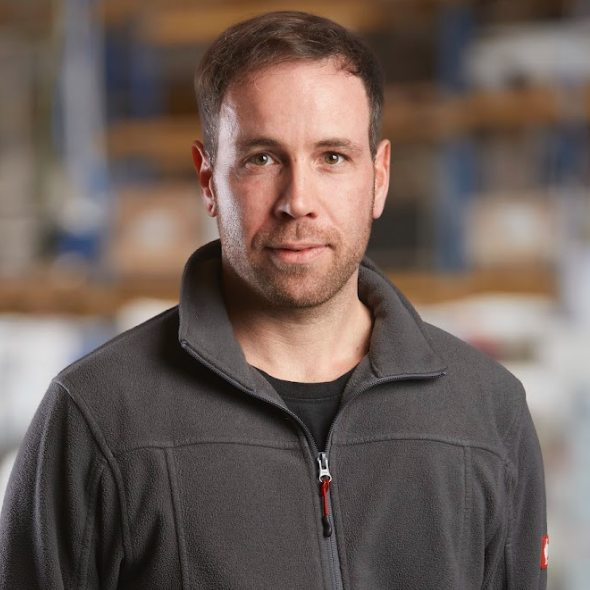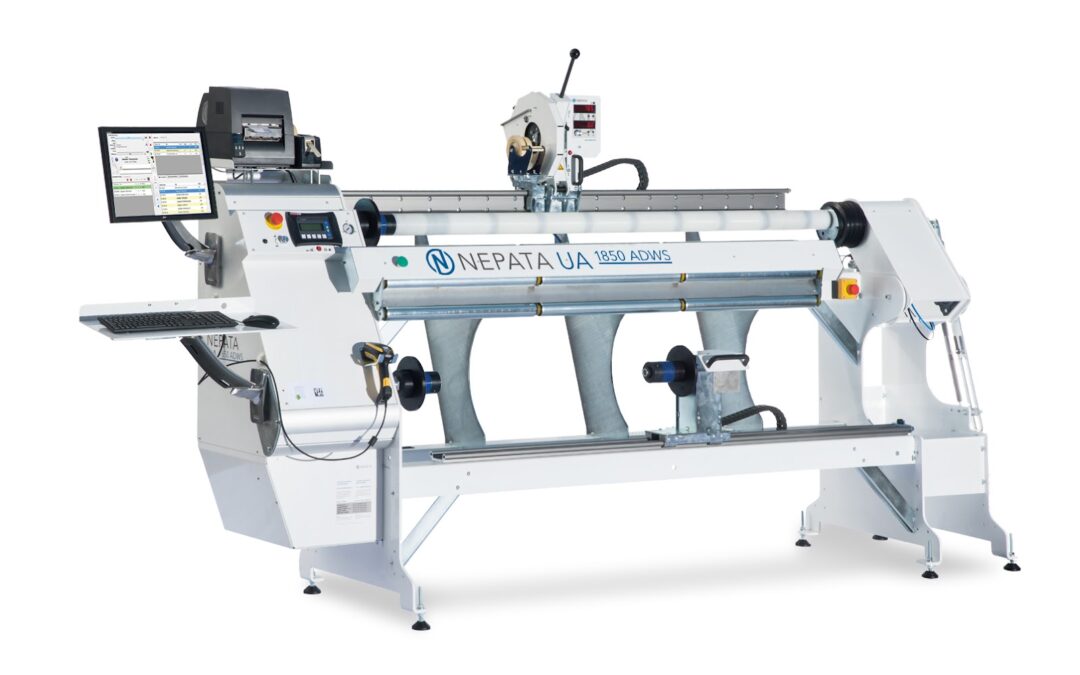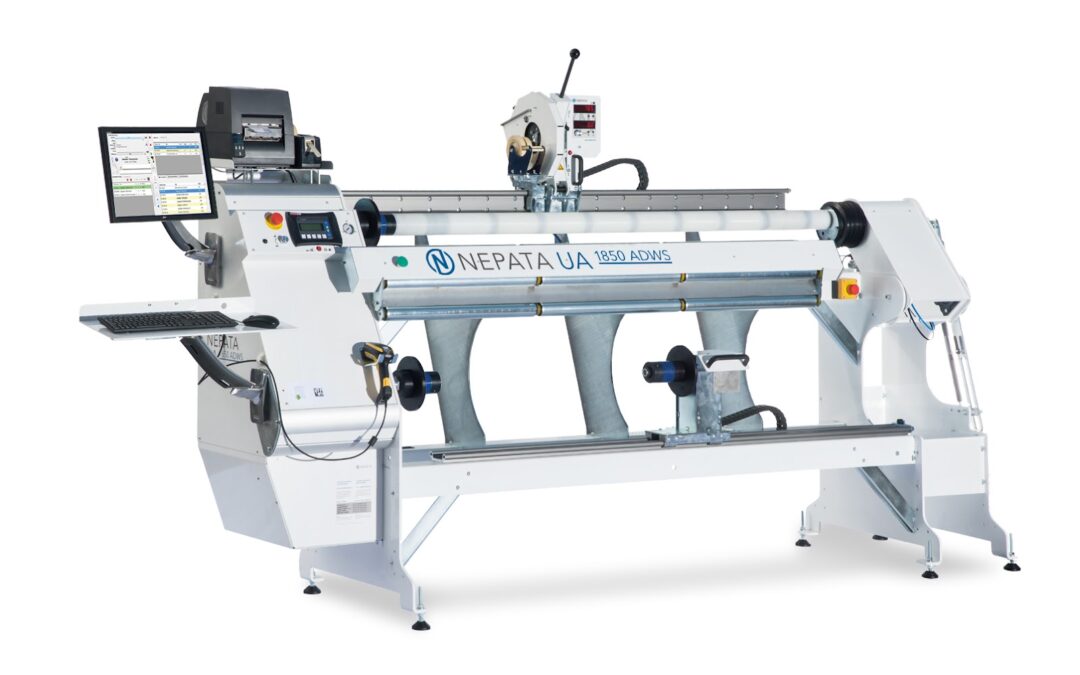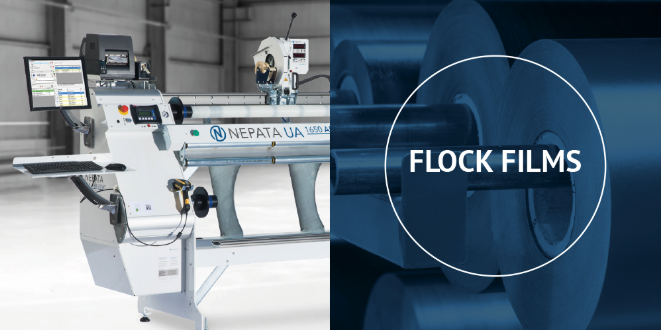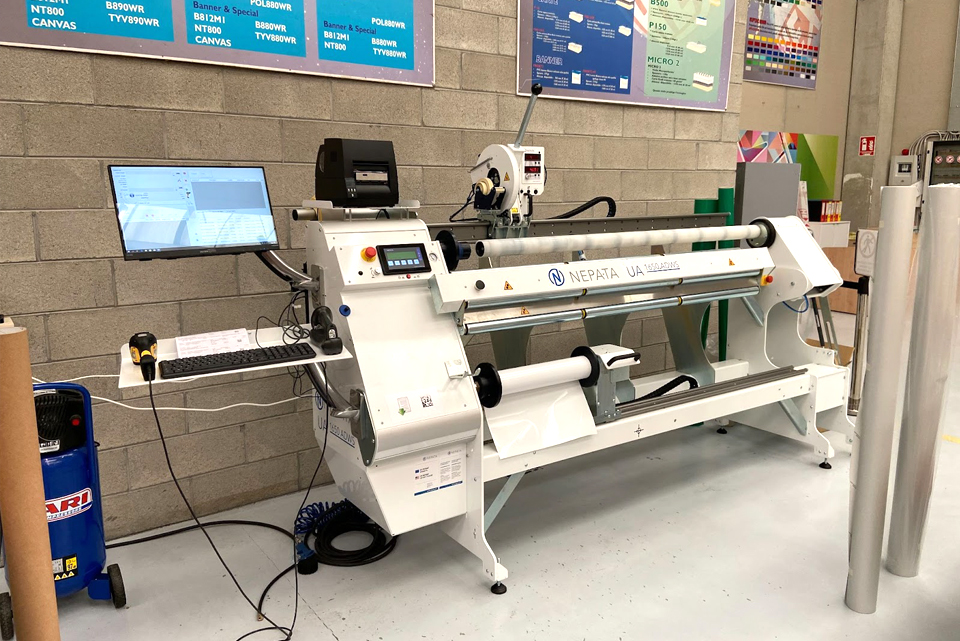Actually a no-brainer: You need a sharp blade to cleanly cut off films and nonwovens on rolls. What is important and why the regrinding should be done by the manufacturer himself … 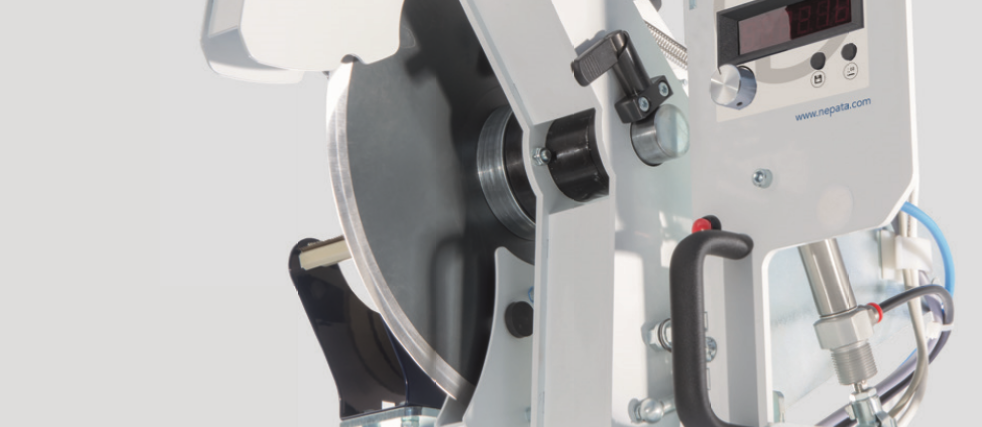 In any form of cutting process, the critical factor is how sharp a blade is. Of course, this also applies to the lengthwise cutting of films by means of slitting on the roll. In daily practice, this means: 1. Make sure you’re using the right blade – the right sharpness for the task. NEPATA offers blades in various sizes, hardnesses and grinds for its ADWS slitting system . 2. Have the blade sharpened regularly – in such a way that it works well again. Basic sharpness and final sharpness First of all, we need a certain basic sharpness for all applications, so that the cut can be made cleanly and with not too much force. There are certain applications for which a high final sharpness of the slitting blade is also important so that the cutting edges are particularly clean. This applies especially to all resistant, tough materials. But be careful: the blade must not be too sharp, because then it becomes very thin and brittle. You can see which blade and which grind is suitable for which purpose in this overview. The problem with dull blades Dull blades require more force to cut and they crush material more than they cut cleanly. As a result, material is smeared into the cut edges, so more fringes can develop. In the case of adhesive films, which consist of a top layer and a silicone paper as the base material, undesirable dust formation can also occur on the paper.
In any form of cutting process, the critical factor is how sharp a blade is. Of course, this also applies to the lengthwise cutting of films by means of slitting on the roll. In daily practice, this means: 1. Make sure you’re using the right blade – the right sharpness for the task. NEPATA offers blades in various sizes, hardnesses and grinds for its ADWS slitting system . 2. Have the blade sharpened regularly – in such a way that it works well again. Basic sharpness and final sharpness First of all, we need a certain basic sharpness for all applications, so that the cut can be made cleanly and with not too much force. There are certain applications for which a high final sharpness of the slitting blade is also important so that the cutting edges are particularly clean. This applies especially to all resistant, tough materials. But be careful: the blade must not be too sharp, because then it becomes very thin and brittle. You can see which blade and which grind is suitable for which purpose in this overview. The problem with dull blades Dull blades require more force to cut and they crush material more than they cut cleanly. As a result, material is smeared into the cut edges, so more fringes can develop. In the case of adhesive films, which consist of a top layer and a silicone paper as the base material, undesirable dust formation can also occur on the paper. 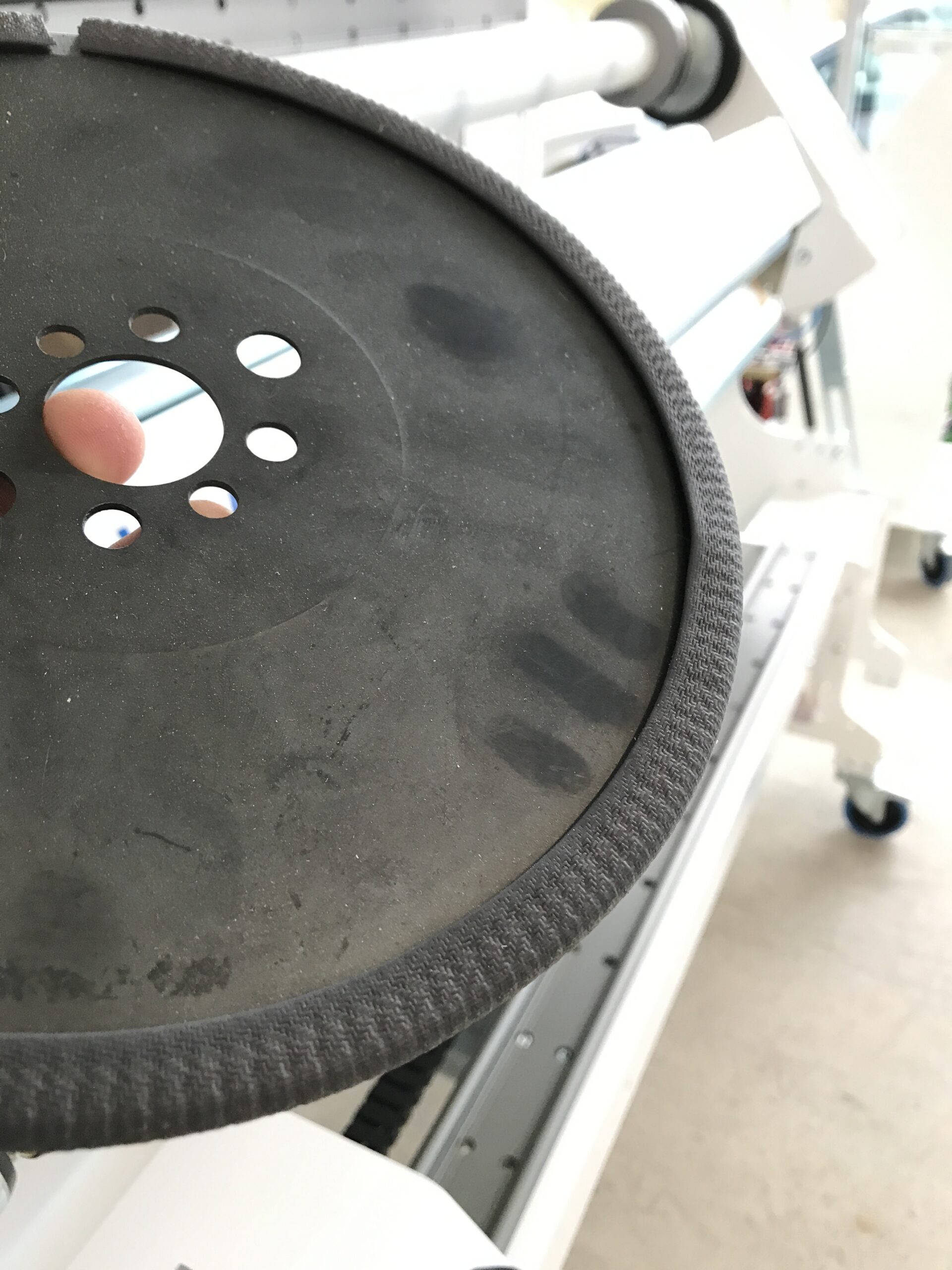 Regrinding only by the manufacturer To avoid this, you must have the slitting blades sharpened regularly and in good time (!). However, regrinding is not so trivial that you could just take the blade to a local tool sharpening service. Rather, you have to know which phases, which degree of sharpness, which degree of hardness, etc. you need for the particular blade. In the past, our customers have often had problems with such reground blades. That is why we offer all NEPATA customers an in-house regrinding service. After all, we know best how to optimally sharpen the blades for your NEPATA machines for a straight and fringe-free cut. With the appropriate heat treatment, we can also guarantee the optimal hardness of the cutting edge.
Regrinding only by the manufacturer To avoid this, you must have the slitting blades sharpened regularly and in good time (!). However, regrinding is not so trivial that you could just take the blade to a local tool sharpening service. Rather, you have to know which phases, which degree of sharpness, which degree of hardness, etc. you need for the particular blade. In the past, our customers have often had problems with such reground blades. That is why we offer all NEPATA customers an in-house regrinding service. After all, we know best how to optimally sharpen the blades for your NEPATA machines for a straight and fringe-free cut. With the appropriate heat treatment, we can also guarantee the optimal hardness of the cutting edge. 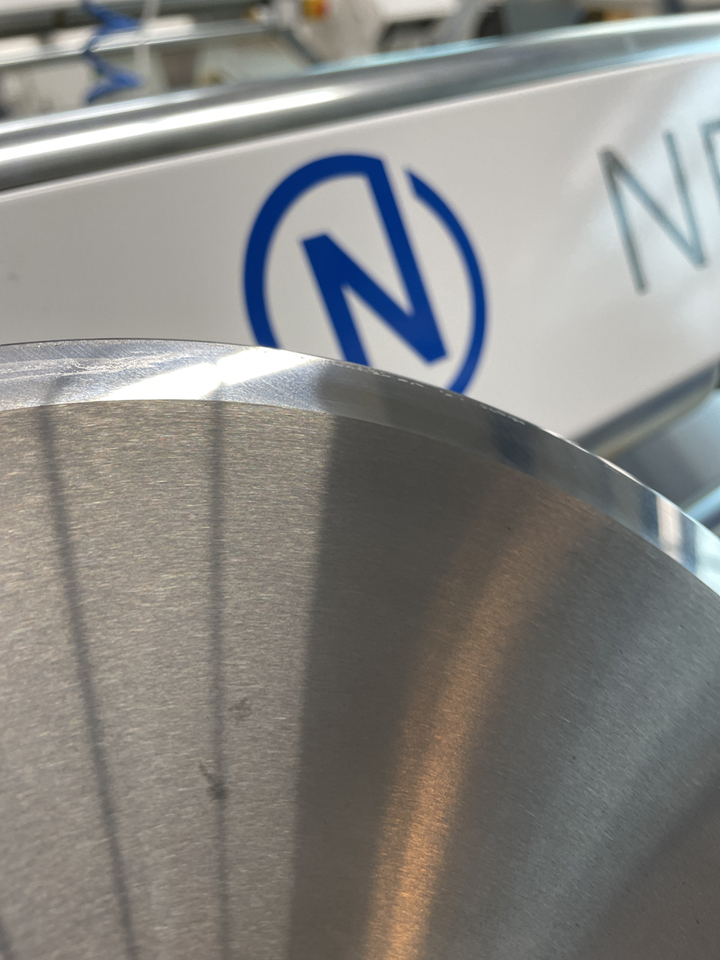 The alternative: solid carbide blades If you need a high final sharpness, you can also use a carbide blade. It makes a real difference, especially with resistant materials: perfect cutting edges, no smearing, no fraying. It also scores with a long service life. It stays sharp 3 to 5 times longer than the standard HSS steel blade. That means: You have to change blades much less often, grind them less frequently and thus have longer process reliability. More know-how about slitting can be found in this video https://www.youtube.com/watch?v=Z9VdDLhCPgo Send us your request for the grinding service here Previous articles in our slitting series: #1 – Which blade for which purpose
The alternative: solid carbide blades If you need a high final sharpness, you can also use a carbide blade. It makes a real difference, especially with resistant materials: perfect cutting edges, no smearing, no fraying. It also scores with a long service life. It stays sharp 3 to 5 times longer than the standard HSS steel blade. That means: You have to change blades much less often, grind them less frequently and thus have longer process reliability. More know-how about slitting can be found in this video https://www.youtube.com/watch?v=Z9VdDLhCPgo Send us your request for the grinding service here Previous articles in our slitting series: #1 – Which blade for which purpose
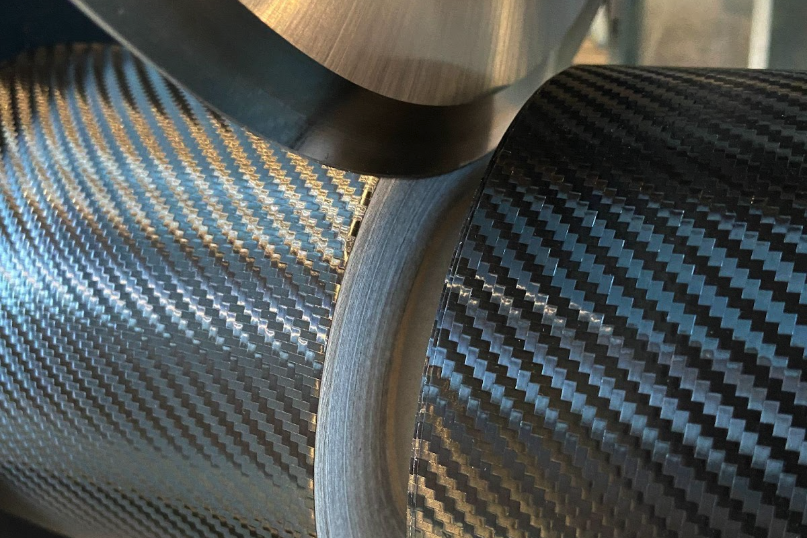
TEST: Slitting carbon film for car styling
Cast carbon film has to be able to withstand a lot - the material is correspondingly thick, stable and yet flexible. How does NEPATA perform when it comes to slitting? The photos prove it: The cutting edges are absolutely straight and clean, no fringes. Fortunately,...

